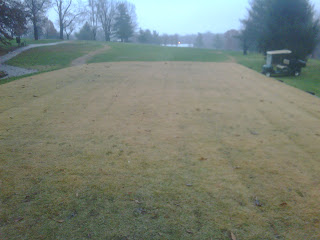
Pictured above is a flooded(& frozen) #11 fairway. Why does this happen?

Years ago the valley on number 12 was always wet so we installed some underground drainage that runs into a well located in front of the white truck above.

The pump in this well forces the water up the hill and dumps it into our irrigation pond. We have had some issues with this pump kicking off during bad weather which then allows the water to flood the fairway.

Pictured above is the 36" well on the right where the pump is located and on the left is the electrical transformer. The blue box seen contains the breaker that we have had trouble with kicking off during storms.

















































